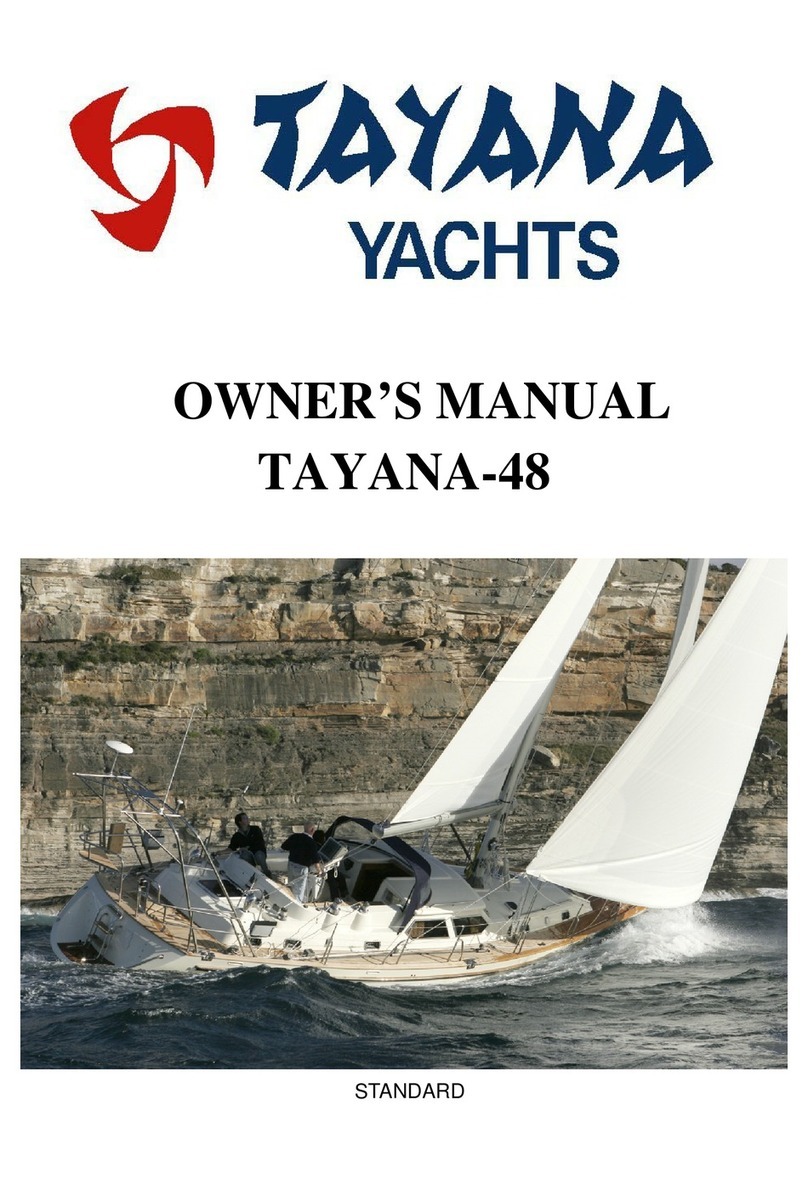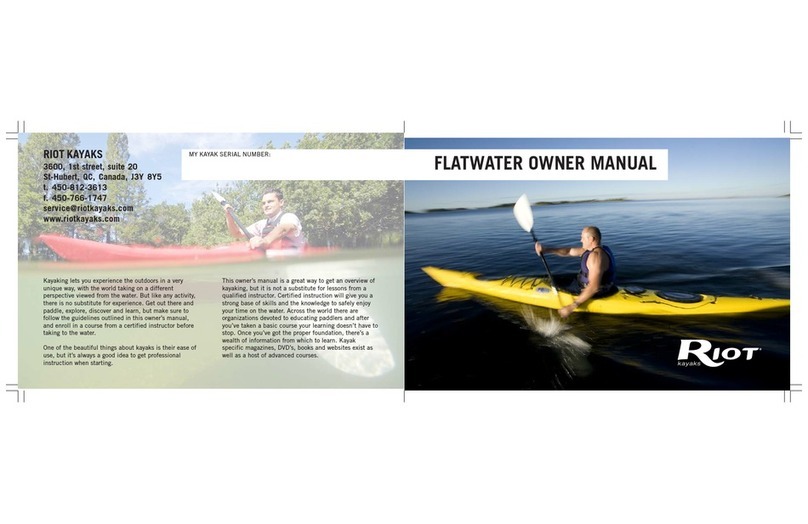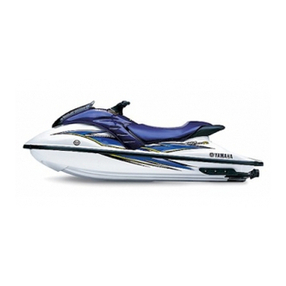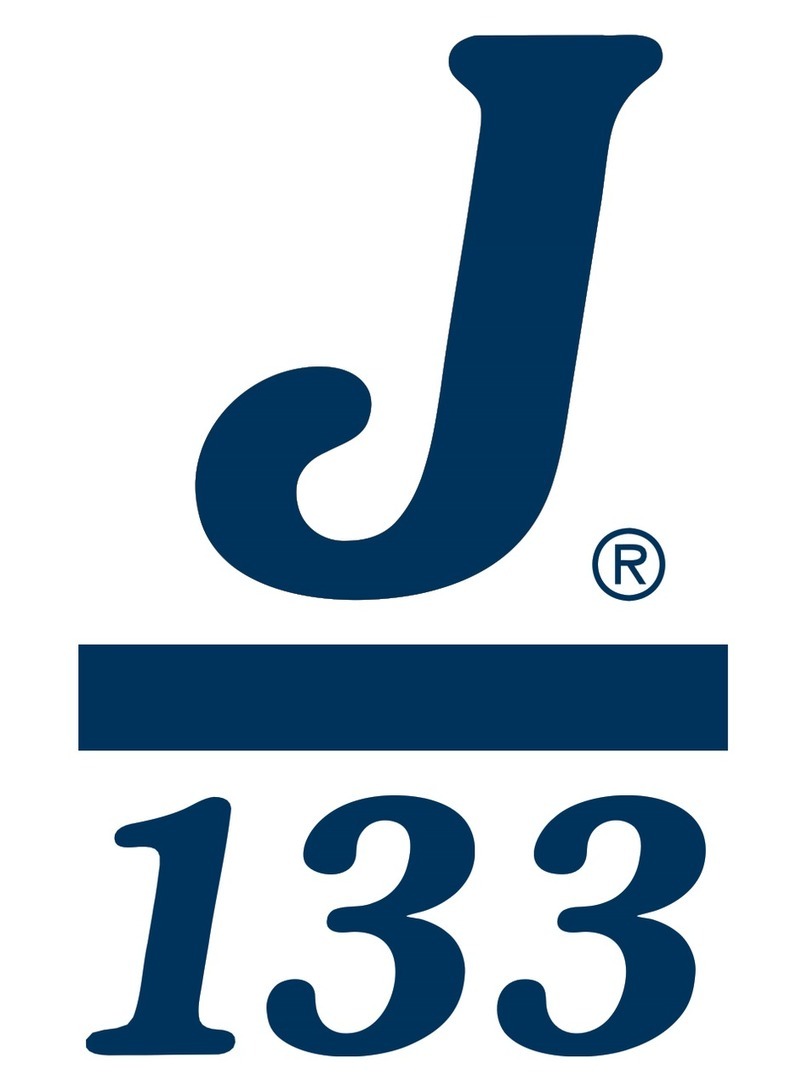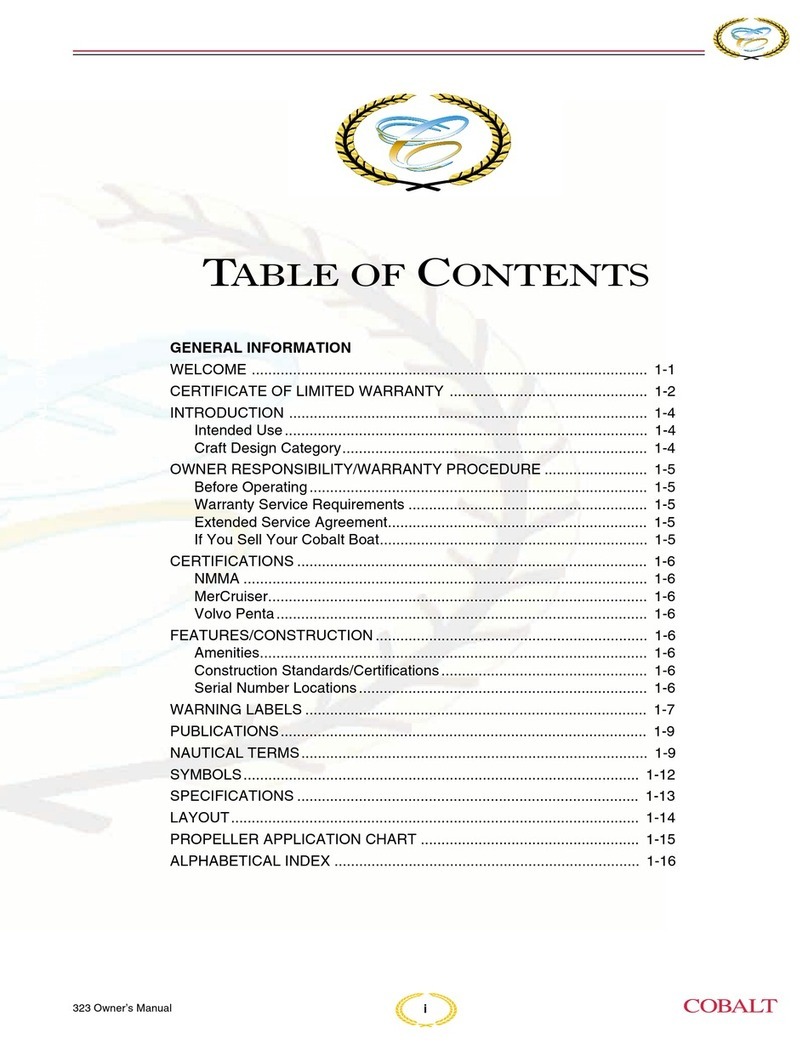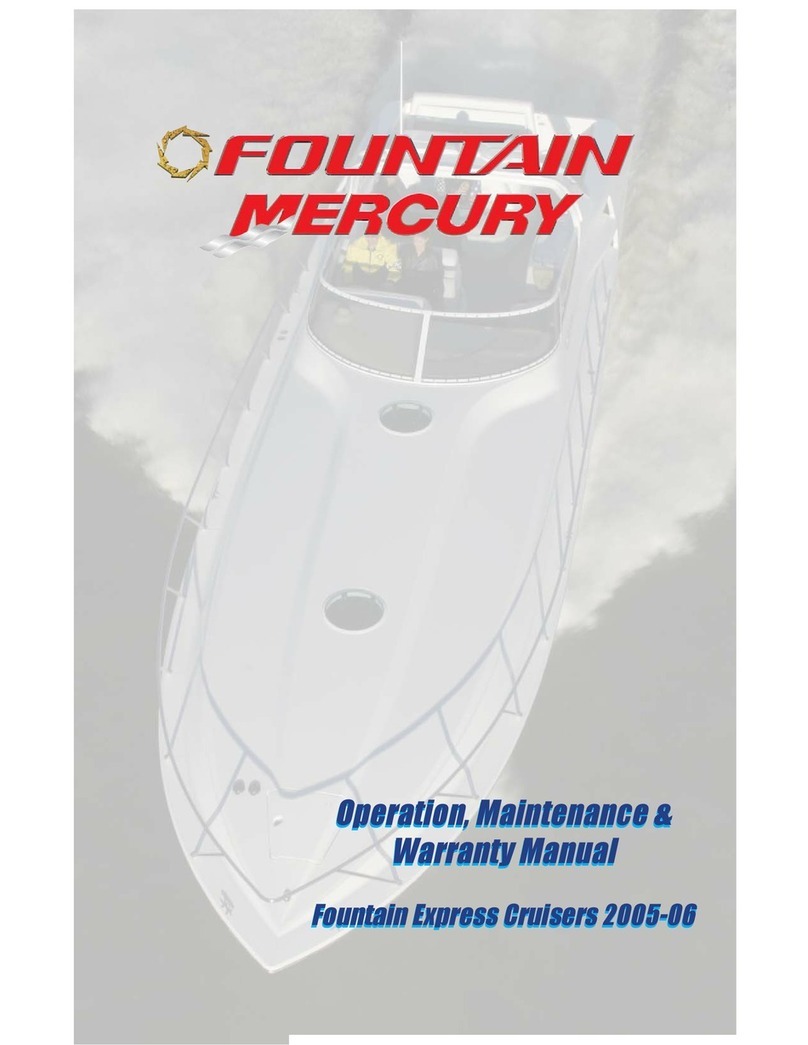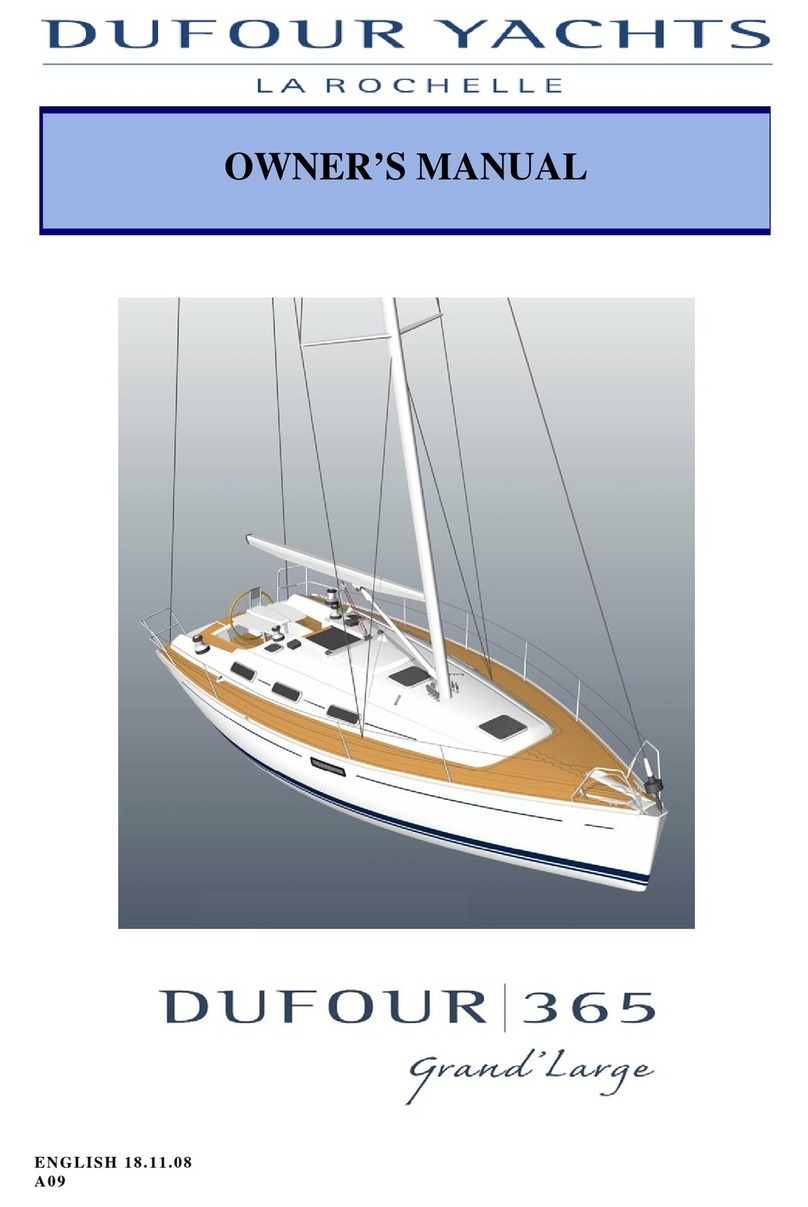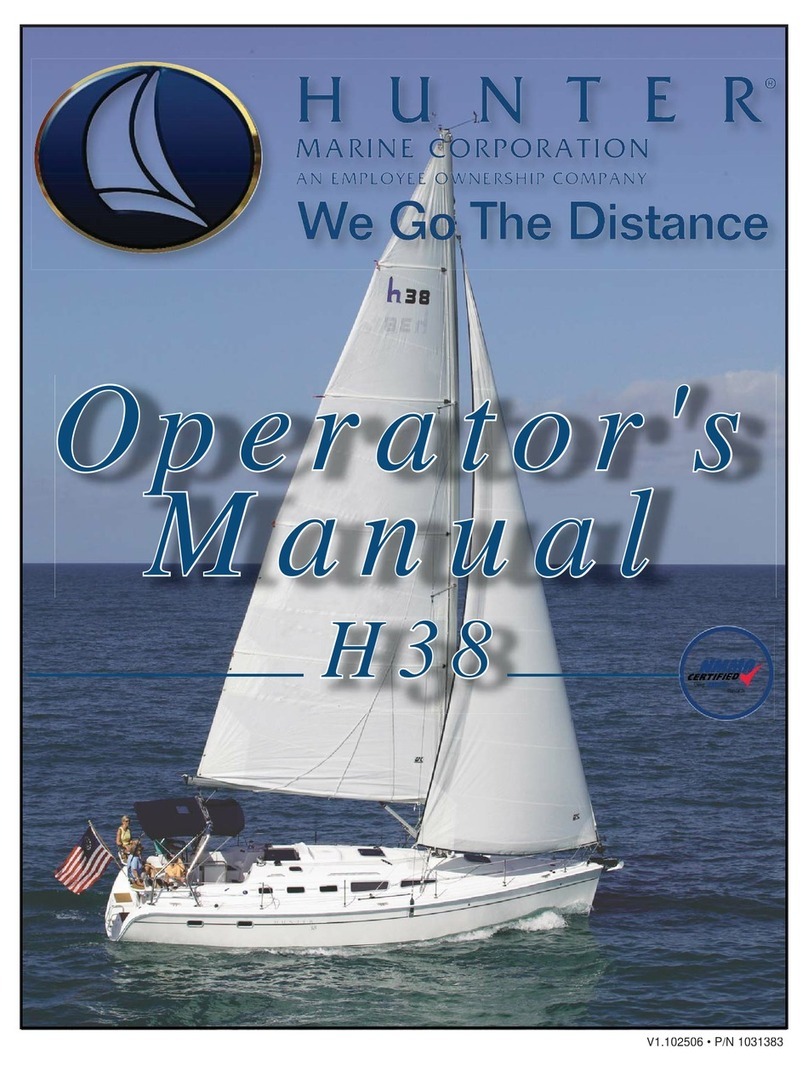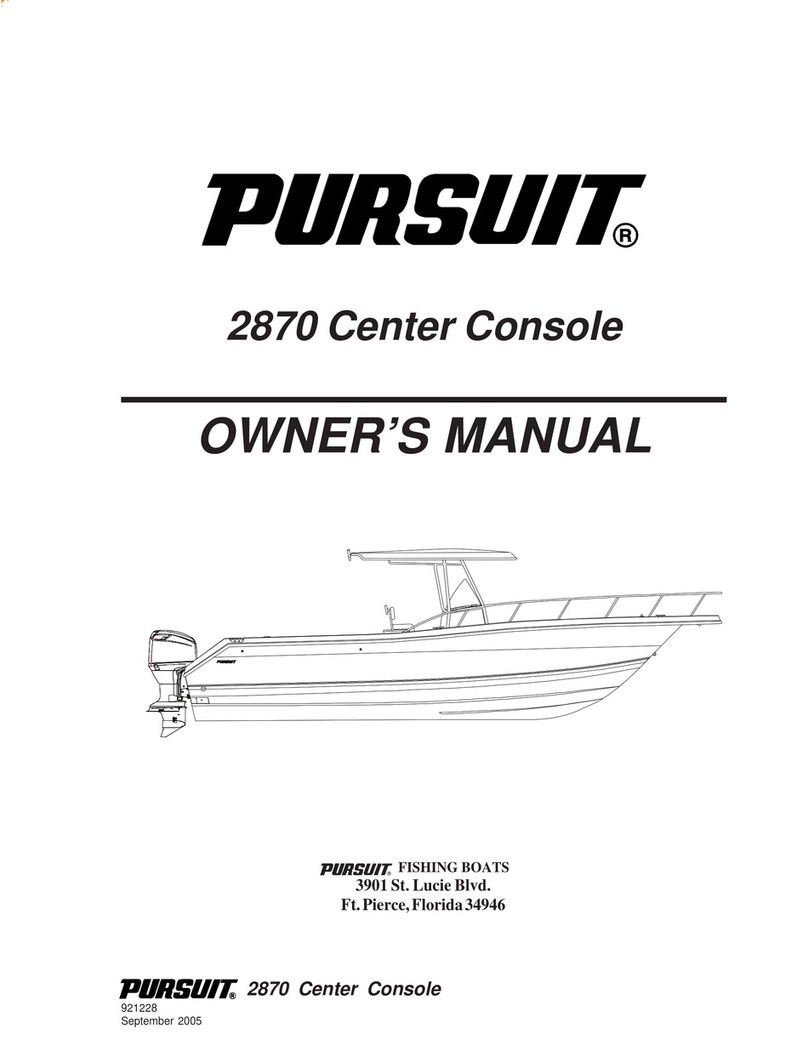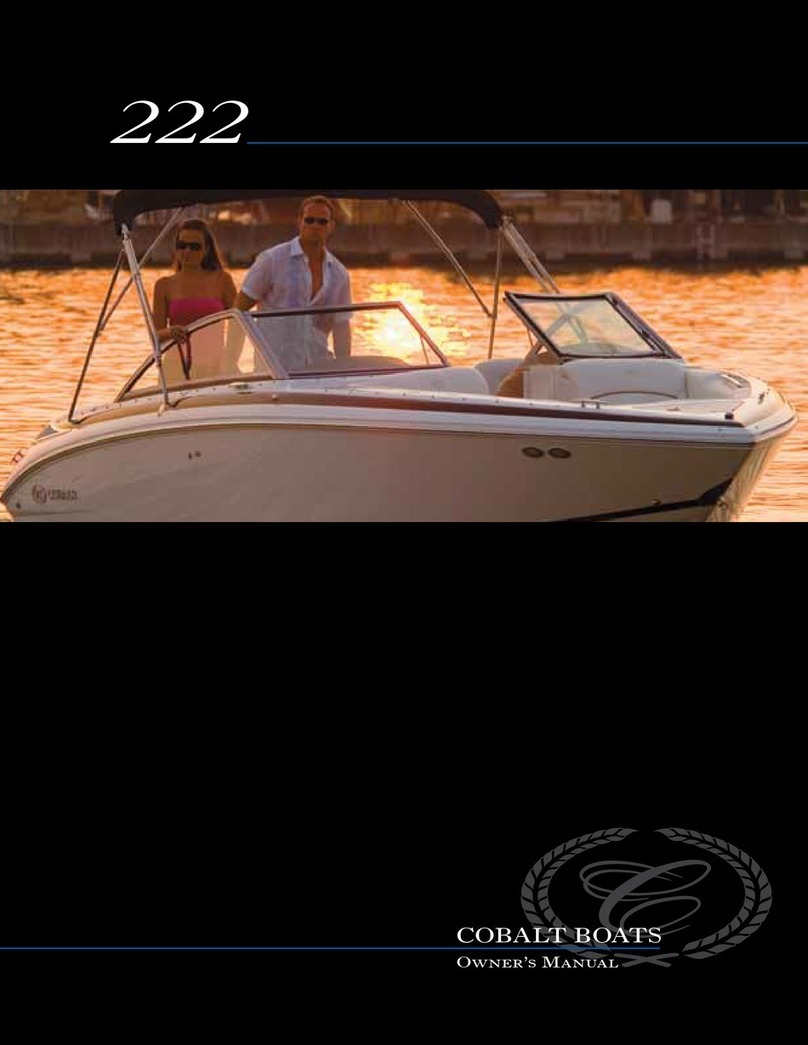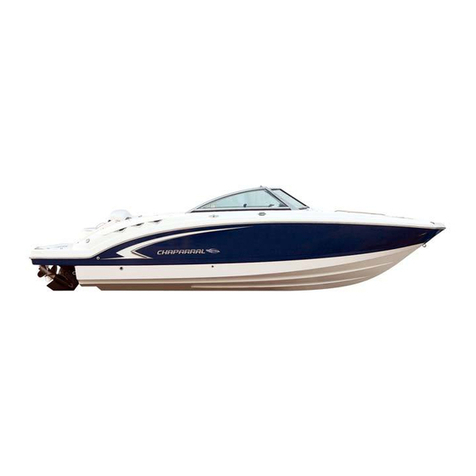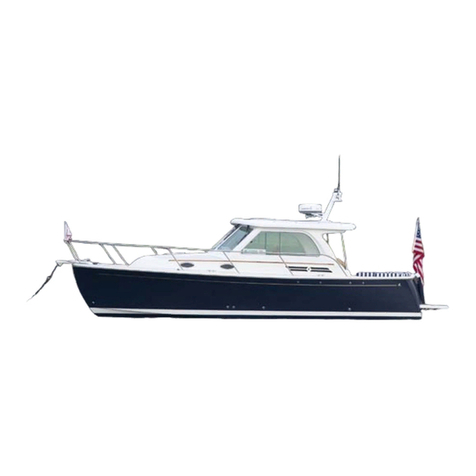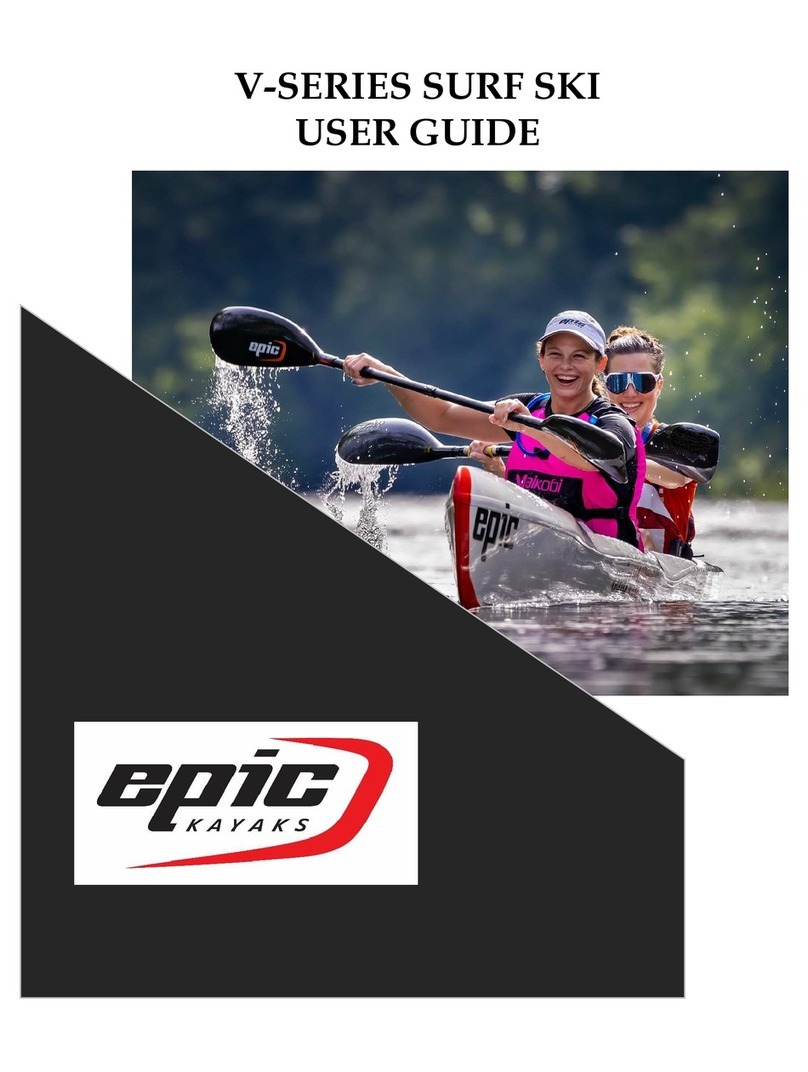Tayana VANCOUVER 42 User manual

1
OPERATIONS AND MAINTENANCE
MANUAL
TAYANA VANCOUVER 42

2
Tayana V-42 Center Cockpit Sailplan

3
Tayana V-42 Aft Cockpit Interior Layout

4
TABLE OF CONTENTS
Tayana V-42 Center Cockpit Sailplan .................................................................. 2
Tayana V-42 Aft Cockpit Interior Layout............................................................. 3
TABLE OF CONTENTS .................................................................................................... 4
LIST OF TABLES AND FIGURES................................................................................... 7
CHAPTER I: INTRODUCTION ...................................................................................... 8
CHAPTER II: SPECIFICATIONS................................................................................... 9
A. General Design Specifications.................................................................................... 9
B. Serial Numbers ........................................................................................................... 9
C. Materials ................................................................................................................... 10
1. Teak........................................................................................................................ 10
2. Plywood.................................................................................................................. 10
3. Stainless Steel ........................................................................................................ 11
4. Bronze .................................................................................................................... 11
5. Iron......................................................................................................................... 11
D. Construction .............................................................................................................. 11
Figure-II-1: Fiberglass Layout Schedule........................................................... 12
Figure II-2: V-42 Deck and Hull Joint ................................................................. 13
E. Procedures for Documentation ............................................................................... 15
CHAPTER III:................................................................................................................... 17
COMMISSIONING AND DECOMMISSIONING........................................................ 17
A. Initial Commissioning............................................................................................... 17
B. Receiving and Commissioning Check List............................................................. 19
C. Owner Commissioning ............................................................................................. 26
D. Decommissioning for Storage (Winterizing) .......................................................... 28
E. Recommissioning after Lay-up ................................................................................ 30
CHAPTER IV: ................................................................................................................... 32
OPERATING PROCEDURES......................................................................................... 32
A. Sailing the Tayana Vancouver 42................................................................................ 32
B. Tuning the Spars and Rigging ..................................................................................... 33
C. Tuning Under Sail......................................................................................................... 33
D. Handling Under Power................................................................................................. 34
1. Pre-Starting Check-Off ............................................................................................. 34
2. Starting Procedures ................................................................................................... 35
3. Engine Operation....................................................................................................... 35
4. Engine Shut-Down ..................................................................................................... 35
E. Fuel System .................................................................................................................... 36
Figure IV-1: Fuel Supply Plumbing .................................................................... 37
Figure IV-2: Fluid Plumbing System .................................................................. 38
Figure IV-3: Center Cockpit Tankage Diagram ............................................... 39
F. Electrical System............................................................................................................ 40
1. The DC Electrical System.......................................................................................... 40

5
a. The Energy Audit System ..................................................................................... 40
Figure IV-4: Electrical Power Supply................................................................. 41
b. Electrical Panel ...................................................................................................... 42
TABLE IV – 1: Direct Current Energy Audit ..................................................... 43
c. Engine Control Panel............................................................................................. 44
2. The Alternating Current System.............................................................................. 44
a. The AC Electrical Control Panel.......................................................................... 44
b. Hot Water Heater .................................................................................................. 44
c. Shore Power Connecting Procedure..................................................................... 44
d. Disconnect Procedure ............................................................................................ 45
e. Battery Charger Option ........................................................................................ 45
G. The Plumbing Systems ................................................................................................. 45
1. The Fresh Water System ........................................................................................... 45
Figure IV-5: Fresh Water System........................................................................ 46
2. Bilge Pumps ................................................................................................................ 47
3. Holding Tank.............................................................................................................. 47
Figure IV-6: Waste Water Plumbing System.................................................... 48
4. Toilet............................................................................................................................ 49
Figure IV-7: Partial Plumbing Layout................................................................. 49
H. The Propane System ..................................................................................................... 50
Figure IV-8: Propane System ............................................................................... 51
CHAPTER V ...................................................................................................................... 52
MAINTENANCE AND MAINTENANCE PROCEDURES ..................................... 52
A. Hull ............................................................................................................................. 52
B. The Deck and Cabin Top.......................................................................................... 53
C. Interior Woodwork ................................................................................................... 54
D. Spars, Rigging, and Sails .......................................................................................... 55
1. Spars........................................................................................................................ 55
2. Standing Rigging.................................................................................................... 56
3. Sails ......................................................................................................................... 57
4. Running Rigging .................................................................................................... 58
5. Winches................................................................................................................... 58
6. Blocks ...................................................................................................................... 59
E. Auxiliary Engines and Related Systems...................................................................... 59
1. Engine ......................................................................................................................... 59
a. Installation.............................................................................................................. 59
b. Maintenance ........................................................................................................... 60
2. Drive Train ................................................................................................................. 62
a. Engine Alignment................................................................................................... 62
b. Transmission .......................................................................................................... 63
c. Stuffing Box ............................................................................................................ 63
d. Cutlass Bearing ...................................................................................................... 64
F. Electrical Systems .......................................................................................................... 64
1. The 12 Volt DC System.............................................................................................. 64

6
a. Electrical Panel....................................................................................................... 65
b. Master Battery Switch........................................................................................... 65
c. Alternator, Engine Mounted ................................................................................. 65
d. Electrical Starter.................................................................................................... 66
e. Wire Runs ............................................................................................................... 66
2. The 110 Volt AC System............................................................................................ 66
3. Protective Systems...................................................................................................... 66
Figure V-1: Electrical Bonding System................................................................. 67
G. Plumbing and Sanitation Systems ............................................................................... 68
1. The Fresh Water System ........................................................................................... 68
2. Bilge Pumping System ............................................................................................... 69
3. Sanitation System....................................................................................................... 69
a. Holding Tank.......................................................................................................... 69
b. The Toilet................................................................................................................ 69
c. Sinks ........................................................................................................................ 70

7
LIST OF TABLES AND FIGURES
Introduction Tayana V-42 Center Cockpit Sailplan .........................................................2
Introduction Tayana V-42 Aft Cockpit Interior................................................................3
Figure II - 1 Fiberglass Layup Schedule.........................................................................12
Figure II - 2 V-42 Deck and Hull Joint ..........................................................................13
Figure IV - 1 Fuel Supply Plumbing................................................................................37
Figure IV - 2 Fluid Plumbing System..............................................................................38
Figure IV - 3 Center Cockpit Tankage Diagram..............................................................39
Figure IV - 4 Electric Power Supply................................................................................41
Table IV- 1 Direct Current Energy Audit......................................................................43
Figure IV -5 Fresh Water System ...................................................................................46
Figure IV - 6 Waste Water Plumbing System..................................................................48
Figure IV - 7 Partial Plumbing System............................................................................49
Figure IV - 8 Typical Propane System.............................................................................51
Figure V - 1 Electrical Bonding System.........................................................................67

8
CHAPTER I: INTRODUCTION
Congratulations on your selection of a Tayana Vancouver 42 cruising yacht. There is no
better yacht in her size on the market. With care and proper maintenance she will not only
prove to be an excellent investment, but she will take you cruising anywhere in the world
safely and comfortably. This is being proven daily as owners take their V-42s the world over.
Ocean crossings by V-42s are routine. Circumnavigations have been reported. By the same
token, over a hundred of these yachts are the primary homes of their owners.
The object of this Owners Manual/Operations and Maintenance Manual is to guide you in
providing proper care and maintenance to your yacht, and thereby, help you know your yacht
better. Really, it isn’t hard, and it can be fun! Your V-42 has been designed and built with
maintenance in mind. Machinery, pumps, glands, seacocks, etc., have been installed to ensure
full and easy access. Where simplicity and adequate function do not conflict, the simpler
equipment and its placement has been chosen. In a few cases, custom interiors have
complicated some equipment installations, but you will find that adequate access and straight-
forward installations have alleviated the potential for problems.
In the various sections which follow, you will find discussions of materials and construction,
hull maintenance, rigging and sails, machinery, electrical systems, and plumbing. Remember
however, that it is a Tayana Vancouver 42 manual, it is not a general maintenance manual. It is
not designed to replace the manufacturers equipment manuals provided with your equipment.
In fact, should you find that there is a conflict between this manual and your manufacturer’s
instruction book, the latter should take precedence.
This manual should serve as a centerpiece for your operation and maintenance
documentation. It might be more serviceable when you place it in a three ring binder together
with other manuals and operational data such as pertinent radio frequencies, contact
information for various maintenance facilities, and other data on your specific boat.
For those who have purchased an older boat and find some of the information lacking, there
are many avenues to replace this information. Your boat may have many new installations not
developed when the boat was built. Again, for these equipments, you must refer to the manuals
provided with the equipment.
Also, remember as you read/use this book that it was developed using a standard V-42 as its
model. Therefore, there may be items which are different on your boat from that referenced
herein. It would be wise for you to indicate the differences directly in the manual when you
receive it. If you have had to develop drawings (electrical or plumbing for example) which you
find helpful, please pass them on to TOG for distribution to other owners.
Finally, this manual was developed by TOG members who own V-42s, who maintain them
and sail them. It was developed for many owners who felt that they needed a little help in
working with their new boat. The final caveat from the Owners Group is that we are not
responsible for the content of this manual or for any results that may arise from following the
information provided in this manual.

9
CHAPTER II: SPECIFICATIONS
Four models of the Vancouver yachts were built by Ta Yang: After Cockpit, Trunk Cabin,
Center Cockpit and Pilot House. All these were cutter rigged.
A. General Design Specifications
Length overall 41' 9"
Length on deck 40' 2"
Length at waterline 33' 0"
Beam 12' 6"
Draft 5' 10"
Displacement (unloaded) 29,147 lbs.
Ballast 11,800 lbs.
Sail area
Main - 407 ft.sq. Staysail - 255 ft.sq. Yankee - 493 ft.sq.
Engine options:
Perkins 4-108
Yanmar 3QM30
Yanmar 4JHE
Fuel tankage (standard) 120 gallons in two black iron tanks
Water tankage (standard) 140 gallons in two stainless steel tanks
Vertical clearance 60' 10" Mast height above L.W.L.
B. Serial Numbers
It is a wise idea to place the serial numbers of the boat and its major equipments in this
place where it is available for replacement parts or determining equipment warranties.
Hull number _______________________________________
Documentation number ______________________________
Engine serial number ________________________________
Hot water heater serial number ________________________
Stove serial number _________________________________
Battery charger serial number _________________________
_________________________________________________

10
C. Materials
A few words about materials are called for because of the many questions people ask about
the quality of the metals, woods and plastics used in Far East built yachts. In the early years of
their building, there were some building challenges that had to be overcome. But Ta Yang
overcame them as they developed. They have matured to be one of the finest boat builders of
the 21st century.
The resins used in the construction of Tayana yachts have evolved as has their technology.
These polyesters were purchased in the United States or Japan where the leading resins are
developed. Their quality equals or exceeds that of resins used in nearly every U.S. or European
yard. Those resins used in post 1985 boats were isophthalic gel to resist blistering and those in
1992 and later used vinylester resin which is in use today (2006) and is purported to be the
leading resin for yachts because it is considered to be the most moisture resistant..
Fiberglass is primarily purchased from the U.S., although some are purchased from Japan
and Europe. Most glass structures are made from 1.5 ounce mat and 24 ounce woven roving in
alternating layers.
Various core materials are used. If cored hulls are ordered, the material is usually AirexTM.
Kleegecell foam was used in 1982. This plastic material is light and highly resistant to
moisture. It is also an effective insulator. The decks of Tayana yachts are generally cored with
wood blocks cut into two inch squares and formed into core "mats" to isolate moisture
problems, much as Balsa is used. It is heavier than either Balsa or Airex, but it is cheaper than
either and tolerates fastenings better. Where there is to be a heavy installation of some type,
such as a winch or windlass, the core material is usually a solid plywood sheet covered on both
sides by a heavy fiberglass laminate.
1. Teak.
Teak is obtained from several sources. The most common, at this writing, appears
to be Burma. The demand for teak is sufficiently high that properly cured teak is
virtually impossible to find. It has been reported to us that the teak obtained by
TaYang is generally two to three years old when purchased. This teak is then cut
into planks and stored in a drying yard for a period of months. It is dried further in a
kiln before it is used on a yacht. Optimally, teak would be aged for seven to eight
years before use and kilns would not be used.
Curing cracks have occasionally been a problem in yachts with solid teak tables
or desk tops. Where this has occurred, the tops have been replaced. On the whole,
however, the teak has been surprisingly good, and in applications such as ceiling
and decks, it is almost problem-free. (See Section V for proper maintenance care.)
2. Plywood
Plywood is the core material used in interior bulkheads, soles, and tops as well as
for certain structural applications. TaYang does use marine plywood. The glues
used between the plywood is waterproof. There have been few plywood problems

11
when owner maintenance has been reasonable.
3. Stainless Steel
Type 304 stainless steel is most common in yachts whether built in the Far East or
elsewhere, and that is what TaYang generally uses. Type 316 stainless steel is the best for
yacht application but it is considerably more expensive than type 304. There is little
difference in strength between them, but type 304 can tend to show corrosion which
while generally-harmless, is irritating
4. Bronze
Bronze fittings used on Tayana yachts are made in Taiwan. Tests by an independent
laboratory showed that the bronze used is of good marine alloy and grade. The bronze
castings are C86800 (55Cu, 37Zn, 3Ni, 2Fe, 3Mn alloy while such items as turnbuckle
barrels are C19000 alloy (98-7Cu, 1.1Ni, 0.25P).
5. Iron
TaYang uses black iron in fuel tanks and cast iron ballast. This is important because iron is
less susceptible to corrosion than is the steel that is occasionallyused by some builders in place
of iron. TaYang does paint the iron with a good quality red lead primer to extend the life of the
tank.
D. Construction
Your Tayana 42 has been constructed of the finest materials, using the best techniques, and it
exceeds the specifications laid down by any of the most accepted standards-setting agencies. The
fiberglass schedule for the hull is shown in Figure II-1. Layup is done in a single mold by hand using
polyester resin.
The large female mold is separated longitudinally for cleaning and mold preparation. The gelcoat is
sprayed in and the first glass layer is laid up. The mold is then joined and all the remaining layups are
done in the assembled mold. While the hull is still in the mold, bulkheads are installed and the hull is
allowed to cure. The deck is laid up in much the same way except that a core of wood is used in
those deck areas which will generally be required to support loads such as decks and cabin top.
Ballast is made of a single casting of cast iron. The ballast casting is lowered into the keel cavity
and is fully encapsulated to become part of the hull. The deck and hull are joined by one of the
strongest methods in the industry. A diagram of the deck to hull joint is shown in Figure II-2.
Assembling the hull and deck is one of the most critical operations in the yacht's construction. The

12
Figure-II-1: Fiberglass Layout Schedule

13
Figure II-2: V-42 Deck and Hull Joint

15
deck is lifted by a crane above the hull. The joint is prepared with 5200 epoxy compound and the
deck is then set onto the hull. The joint is then bolted together using stainless steel-bolts on varying
centers depending on the curve of the hull at the various points. Once the joining has been
accomplished, the joint is fiberglassed as shown in the figure. The result is a single piece, extremely
strong hull with a rigidly curved hollow beam in the form of a bulwark running nearly the entire
length of the yacht.
Once these critical operations have been finished to the satisfaction of the company engineers,
exterior trim is installed and the work on the accommodations is undertaken. A team of the world's
finest boat carpenters and finishers takes over the yacht and frames in the interior cabinets and bunks,
as shown on the plans. This work is done with extreme care and attention to detail. Framing is
actually glassed into the hull and becomes an integral part of it. As a result, the quality and livability
of the accommodations is largely a function of how well the framers do their job. Cabinets, doors,
drawers, and the like are done by cabinet makers in a specialty shop to the order of the production
foremen. TaYang engineers closely supervise every step to insure that dimensions are met and proper
installation is made. The result is a yacht whose strength and beauty are second to none and whose
accommodations precisely fit the needs of its new owner.
The aluminum spars supplied are ordered from overseas suppliers- Taiwan has no extrusion
capability at this writing. Generally, the suppliers have been ISOMAT of France and YACHT SPAR
out of New Zealand. ISOMAT masts are received already anodized and are not necessarily painted.
YACHT SPARS are painted at the yard and the color can be selected by the buyer. TaYang uses a
primer and polyurethane for this. Aluminum spars are also being imported from Japan. These are
painted by the spar manufacturer.
Standing rigging is assembled at the yard using Japanese stainless steel cable and Taiwanese-made
turnbuckles and swage end fittings. A crew at the factory sets up the spars and all of the rigging is
fitted to each yacht. This is an important factor in cutting down the number of modifications which
might have to be done in the U.S. Similarly, pulpit, lifelines, stanchions, and bowsprit are all installed
to insure proper fit. The stanchions and pulpits are among the industry’s best.
The final step is packing the yacht for shipment. Spars, rigging, and any projecting assemblies are
all disassembled and packed either in the hull, or, in the case of the masts, into special boxes. On the
shipping date, the yacht is loaded onto a lowboy and taken to the huge port city of Kaohsiung where it
is loaded aboard one of the many container carriers which operate between Taiwan and the United
States.
E. Procedures for Documentation
Documentation must be accomplished with the United States Coast Guard in the United States or
with the governing agency in the country where your vessel is to be registered. We suggest you
contact the Documentation office nearest you for full details, forms, instructions, duties and customs

16
fees, call the Coast Guard at 1-800-799-8362 or visit their internet site at www.uscg.gov .
The following notes and references are made for your information and convenience. Theyshould in
no way be construed as complete and detailed instructions:
USCG Documentation Procedures
Pleasure Class: Under 20 tons requires a Yacht License. Twenty tons and over requires a certificate of
Enrollment and a Yacht License.
Application for Admeasurement requires a Builder's Certificate issued by the builder on the
prescribed Coast Guard form. This certificate will be retained by the Coast Guard with certified
copies available to the owner.
Admeasurement The admeasurer uses data in the Builder's Certificate (BC) to compute net tonnage.
Gross Tonnage = 1/2 (LBD/100)
Net Tonnage = 0.9 (Gross Tonnage)
where: L = Length, B = Breadth, and D = Depth
Official Number - After admeasurement, your certificate of tonnage, application is made for an
official number. Title and mortgage papers are required.
Additional Forms which may be needed include:
Applications for number
Declaration of Ownership and/or Extent of interest
Identification of Owner's or Existing Mortgages
Declaration of No Foreign Interest involved
Declaration of Master of Vessel
Declaration No freight or Commercial Passengers to be Carried on Board.
Designated Home Port-Licensing Office.
Designated Hailing Port-Berth Marking Certificate

17
CHAPTER III:
COMMISSIONING AND DECOMMISSIONING
A. Initial Commissioning
The initial commissioning of your yacht is essentially the owner's responsibility. However, the
dealer may provide you with this service or recommend a yard which is competent in commissioning
Tayana yachts. The initial commissioning is extremely important. In addition to putting the yacht
into service, the following functions are also served: shipping damage is revealed. The trucking
company is liable for shipping damage, however, they require prompt notification of any claims
against them; part shortages are revealed, Tayana boxes the loose gear and provides a packing list,
but occasionally errors are made; and quality defects are revealed. Any damage at the destination
should be listed on the order receipt or bill of lading. Your yacht is thoroughly checked at the plant.
The quality program for each yacht includes a water drench test, functional testing of all systems, and
visual checks of the entire yacht. However, overseas and overland travel often causes leaks and other
problems which are difficult to detect by visual inspections alone. Engine delivery check-out service
is performed at the factory. However, the engine and the alignment of the power transmission system
should be re-checked after the yacht is launched.
The following functions should be performed during the initial commissioning. Detailed
procedures are described in their respective sections of this manual, and should be reviewed before
initiating commissioning.
1. Inspect hull, deck, rudder, propeller and shaft and spar for shipping damage.
2. Inventory all loose gear and report shortages or damaged parts.
3. Your yacht may have been partially winterized for winter shipment. Drain plugs will be found in a
bag in one of the lockers. Replace all drain plugs.
4. Install through-hull fittings for owner and/or dealer supplied equipment.
5. Prepare and paint bottom. All residues resulting from lay up and construction of hull must be
removed using a wax remover to ensure barrier and/or anti-foulant will adhere. For maximum anti-
fouling life, a full second coat of bottom paint is recommended.
6. Check continuity of zincs on shaft and keel. Continuity with all underwater fittings should also
be checked with a VOM meter.
7. Check, tighten hose clamps on all underwater fittings, and make sure they=re all double clamped.
8. Remove compass, or binnacle plate and tighten all bolts on shift and throttle linkages.

18
9. Launch and inspect all underwater fittings for leaks.
10. Fill fuel, water, and propane tanks and search for leaks. Ensure that there are no leaks in propane
tank storage compartment. Adding water to compartment and looking for leaks may be necessary.
11. Install pulpits, stanchions, lifeline lines, safety lifeline ends and gates.
12. Install standing and running rigging on mast.
13. Install antennas and other electronics on masthead. Check mast wiring and lights.
14. Step mast, set up and adjust rig, pin and tape all turnbuckles, check halyards.
15. Reeve sheets, bend on and hoist sails, furl sails.
16. Align engine to .002" max. clearance.
17. Check oil and water level in engine.
18. Complete installation of owner or dealer supplied equipment.
19. Check battery condition and recharge if necessary.
20. Check engine operation.
Note: Carefully read your engine manual before operating your engine. Do not let the engine idle for
an extended period during break-in period.
21. Check operation of all systems and equipment.
22. Check all doors and drawers for proper movement and secure latching.
23. Water test decks, fittings, and ports and search for leaks.
24. Sea trial under power and sail.
25. Re-check for leaks in interior plumbing systems (fuel, water, and waste) and exterior hardware.
26. Clean interior and exterior of yacht thoroughly.

19
B. Receiving and Commissioning Check List
The next few pages provide you with a checklist to inspect and commission Tayana yachts.
Completing this checklist will provide you with a "condition report" of the boat before and after
initial commissioning.
Receiving and commissioning check list
(For owner's records)
Comments:
Names of company and individuals involved in commissioning:
Sea trials conducted by:
Compass swung by:
Engine start-up by:
Electronics checked by:


20
Delivery Inspection
YES NO CORRECTED
Boat properly cradled
Spars properly cradled
Free of sideswipe damage
Companionway seals unbroken
Absence of exterior hardware theft
Loose gear inventory complete
Propeller secured properly
Rudder moves freely
Prop shaft turns freely
All below waterline fastenings are tight
All plumbing thru-hulls connected and securely fastened
All thru-hull valves cycled and shut
Launching Inspection
YES NO CORRECTED
Boat properly slung during launch
No damage during launch
Thru-hull fittings leak-free
Rudder bearing leak-free
Shaft packing nuts adjust to 1 drop/30 seconds with engine
off but newer dripless packing do not drip.
Thru-hull valves, connecting hoses and plumbing leak-free
with valves open
Table of contents
Other Tayana Boat manuals
